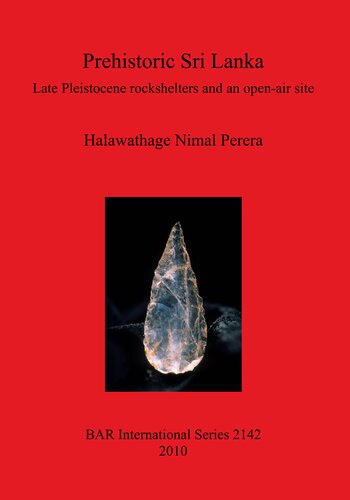

Most ebook files are in PDF format, so you can easily read them using various software such as Foxit Reader or directly on the Google Chrome browser.
Some ebook files are released by publishers in other formats such as .awz, .mobi, .epub, .fb2, etc. You may need to install specific software to read these formats on mobile/PC, such as Calibre.
Please read the tutorial at this link: https://ebookbell.com/faq
We offer FREE conversion to the popular formats you request; however, this may take some time. Therefore, right after payment, please email us, and we will try to provide the service as quickly as possible.
For some exceptional file formats or broken links (if any), please refrain from opening any disputes. Instead, email us first, and we will try to assist within a maximum of 6 hours.
EbookBell Team

4.8
104 reviewsSri Lanka is a tropical island that lies approximately halfway between Africa and Australia along the northern rim of the Indian Ocean, and has one of the best recorded prehistoric sequences in South Asia. A review of its prehistory is a vast subject. The present study investigates the island's hunter-gatherer archaeology between the Late Pleistocene and the middle Holocene, with lowland Wet Zone rockshelters as the principle topic of study. This work synthesises past and current archaeological research in the island as well as presenting new findings from excavations in the Batadomba-lena rockshelter and the open-air site of Bellan-bandi Palassa. The excavation of Batadomba-lena has provided fresh data for understanding human adaptations to the changing environment between approximately 36,000 and 12,000 years ago. A rainforest environment evidently persisted throughout this period in the environs of the site, but the climate was cooler at around the Last Glacial Maximum. Intensive occupation, succeededby increased attention to the management of plant resources, followed the Last Glacial Maximum. Microliths, small tools defined by the presence of blunting retouch, as well as the bifacially trimmed Balangoda Point and polished bone points, were evident from the earliest occupation. The symbolic capacities of the inhabitants were also revealed through the recovery of ornaments and ochre fragments throughout the sequence. The Batadomba-lena sequence has important implications for the Out-of-Africa theory on modern human origins, as well as Sri Lanka's recognition of its cultural heritage.